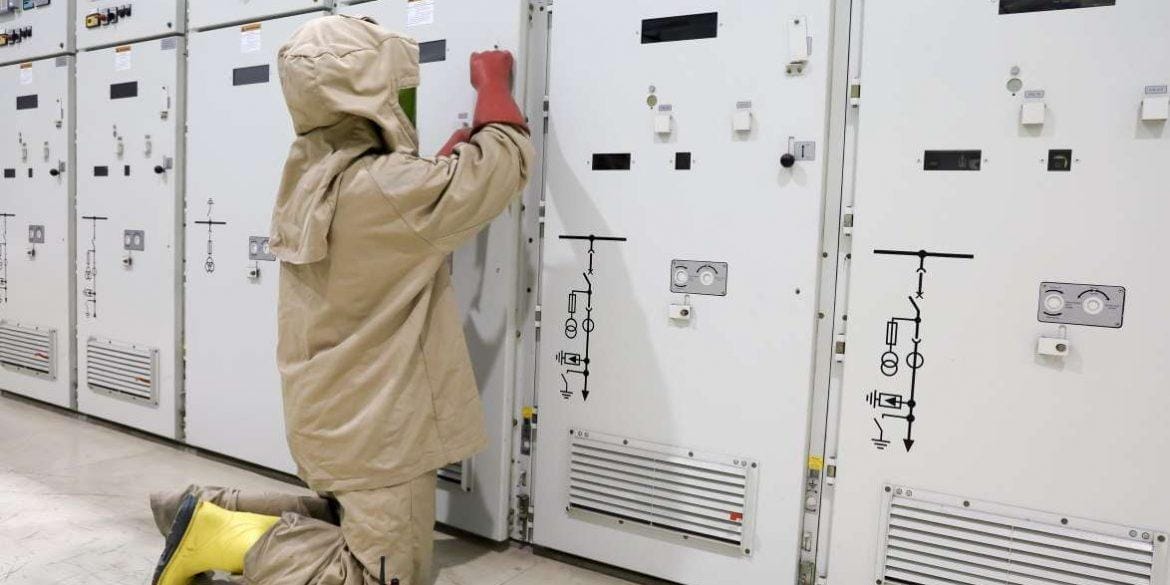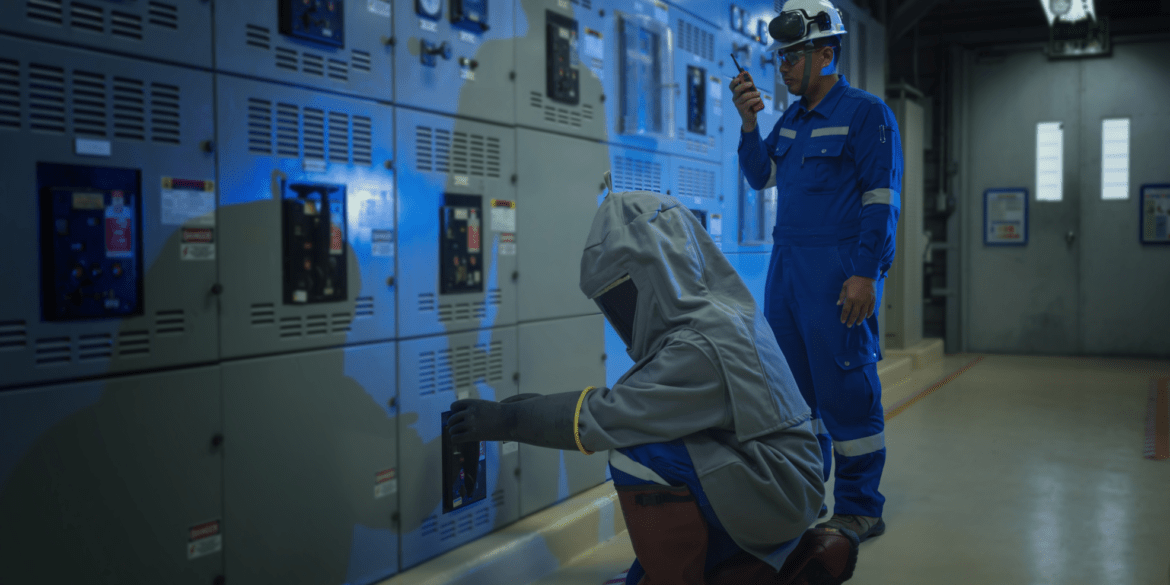
What is working distance
One of the main factors determining the severity of an arc flash injury is the proximity of the worker to the arc flash, also known as the working distance.
Refer to the article Understanding Arc Flash Hazards which explains the arc flash study procedure.
IEEE Std 1584 [1] defines working distance as the distance between the potential arc source and the face and chest of the worker performing the task.
DGUV 203-077 [5] defines working distance as the distance between the electric arc and the operative part of a person’s body (torso) while performing work or while present in the working environment under consideration.
Standard/Typical Working Distances
IEEE 1584-2018
This guide from the IEEE provides the mathematical models for designers and facility operators to apply in determining the arc flash hazard distance and the incident energy to which workers could be exposed during work on or near electrical equipment.
The new 2018 edition supersedes the 2002 edition and the previous calculation models. This new standard edition took over 15 years to develop and resulted from thousands of hours of research, development, and validation.
The typical working distances from IEEE 1584-2018 are listed below.
| Equipment class | Working distance | |
| mm | in | |
| 15 kV switchgear | 914.4 | 36 |
| 15 kV MCC | 914.4 | 36 |
| 5 kV switchgear | 914.4 | 36 |
| 5 kV switchgear | 914.4 | 36 |
| 5 kV MCC | 914.4 | 36 |
| Low-voltage switchgear | 609.6 | 24 |
| Shallow low-voltage MCCs and panel boards | 457.2 | 18 |
| Deep low-voltage MCCs and panel boards | 457.2 | 18 |
| Cable junction box | 457.2 | 18 |
ENA NENS 09-2014
Based on Australian research, the guideline ENA NENS 09 provides calculation methods for determining arc flash hazard distance and incident energy and, ultimately, appropriate PPE selection.
Compared to the older IEEE Std 1584-2002, the ENA NENS 09 method is much more conservative.
The typical working distance is 450 mm (0.45 m) in NENS 09.
Electrical Arc Flash Hazard Management Guideline
This guideline was developed through a collaboration of Australian electricity generation companies and is freely available.
The recommended working distances are:
- LV switchboards: 455 mm
- HV switchboards: 910 mm
NFPA 70E-2021
The NFPA 70E Standard (US-based) sets the requirements for safe work practices to protect personnel by reducing exposure to significant electrical hazards.
The recommended working distances from this document are as follows:
- Low voltage (600 V and below) MCC and panel boards — 455 mm (18 in.)
- Low voltage (600 V and below) switchgear — 610 mm (24 in.)
- Medium voltage (above 600 V) switchgear — 910 mm (36 in.)
DGUV 203-077-2021
This DGUV information brochure is German-published and freely available and is intended to support employers in their PPE selection.
The recommended working distances from this document are as follows:
It can be assumed that the distance to a person’s torso while working will not be lower than a = 300 mm.
| Equipment type | Typical working distance |
|---|---|
| Low voltage distribution/ house junction box, main control cabinet | 300 to 450 mm |
| Low voltage switchgear | 300 to 600 mm |
| Medium voltage switchgear | ≥ 825 mm |
References:
[1] IEEE Std. 1584-2018, IEEE Guide for Performing Arc-Flash Hazard Calculations.
[2] ENA NENS 09-2014, National Guideline for the Selection, Use and Maintenance of Personal Protection Equipment for Electrical Arc Hazards.
[3] Electrical Arc Flash Hazard Management Guideline-2019.
[4] NFPA 70E-2021, Standard for Electrical Safety in the Workplace.
[5] DGUV 203-077-2021 Thermal hazards due to electric fault arcing – Guide for selecting personal protective equipment.




